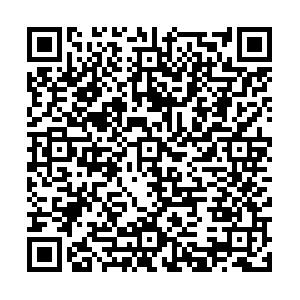The revision and evaluation of the Short Self-reported Adolescent Version of Autism Spectrum Quotient
-
摘要:
目的 修订和评价简版青少年自闭特质自评问卷(the Short Self-reported Adolescent Version of Autism Spectrum Quotient, AQ-SSAV)。 方法 采取分层整群抽样的方法选择阜阳市、合肥市和芜湖市在校初、高中2 644名学生,分别从敏感性、代表性、内部一致性等指标对AQ-SSAV进行修订,使用因子分析法进行降维,同时评价问卷的信效度指标。 结果 通过条目分析和因子降维,5个因子方差累积贡献率为52.29%,最终确定2个维度共计22个条目的AQ-SSAV,总问卷的重测信度、Cronbach’s α系数和分半信度系数分别是0.752、0.843和0.859,内容效度中量表平均内容效度指数为0.98,自闭特质总分与共情总分的相关系数为-0.329(P < 0.001)。 结论 AQ-SSAV的修订符合心理测量学要求,可以用来进行青少年自闭特质水平的测量。 Abstract:Objective To revise and evaluate the Short Self-reported Adolescent Version of Autism Spectrum Quotient (AQ-SSAV). Methods A total of 2 644 junior and senior high school students from Fuyang, Hefei and Wuhu City were selected by stratified cluster sampling. The questionnaire was revised from the perspectives of sensitivity, representativeness and internal consistency. Factor analysis was used to reduce the dimensions. The reliability and validity were also be evaluated. Results Through item analysis and factor analysis, AQ-SSAV was finally divided into 2 dimensions with 22 items in total. The cumulative contribution rate of variance was 52.29% on the 5 remained factors. The retest-reliability, Cronbach's α coefficient and split reliability coefficient of the total questionnaire were 0.752, 0.843 and 0.859, respectively. The average of all item-level content validity index on the scale was 0.98. The correlation coefficient between the total score of autistic trait and the total score of empathy was -0.329 (P < 0.001). Conclusion The AQ-SSAV meets the psychometric requirements and can be used to evaluate the autism traits in adolescents. -
Key words:
- Adolescent /
- Autism traits /
- Psycho-metrics
-
表 1 简版青少年自闭特质自评问卷因子负荷系数a
Table 1. Factor loading of the Short Self-reported Adolescent Version of Autism Spectrum Quotient a
维度 新编号 条目 公因子 1 2 3 4 5 社交与应对 22 b 48.我是个善于交际的人 0.755 3 b 11.我可以轻松应对各种社交场合 0.726 18 b 44.我喜欢社交场合 0.647 21 b 47.我喜欢结交新朋友 0.577 8 22.我觉得结交新朋友很困难 0.521 20 46.陌生的环境会让我感到焦虑 0.498 15 b 37.被打断过后,我能够很快地回去继续做刚才的事情 0.482 4 b 14.随口编个故事或段子,对我来说很容易 0.446 5 b 17.我喜欢和人闲聊 0.841 16 b 38.我很擅长和别人闲聊 0.739 领悟与会意 14 b 36.我可以通过观察别人的表情猜到他们内心的想法和感受 0.715 10 b 27.别人和我说话时,我能很容易听出话语中“言外之意” 0.688 11 b 31.与人交谈时,如果别人对我的话感到了厌烦,我马上就知道了 0.670 19 45.我很难揣摩出别人的意图 0.494 13 35.我通常是最后一个理解笑话笑点的人 0.585 12 33.打电话时,我总是不太确定我该什么时候说话 0.567 1 7.我认为自己还是挺有礼貌的,可别人却不这样认为 0.560 17 39.经常有人说我总是不断地重复着同样的事情 0.532 9 26.我经常发现不知如何将谈话进行下去 0.434 7 21.我不太喜欢看小说 0.784 2 b 8.看小说时,我可以很容易地想象出书里人物的样子 0.691 6 20.看小说时,我常常搞不懂书中人物的真实意图 0.568 注:a方差最大正交旋转;b为反向计分条目。 表 2 各维度与总问卷的信度指标
Table 2. Reliability indexes of each dimension and total questionnaire
问卷构成 首次得分(x±s) 重测得分(x±s) 重测信度系数 Cronbach’s α系数 分半信度系数 社交与应对维度 23.78±4.53 24.30±4.24 0.763 a 0.876 0.884 领悟与会意维度 30.35±4.08 30.54±3.70 0.721 a 0.780 0.792 总问卷 54.06±5.78 54.88±5.76 0.752 a 0.843 0.859 注:a P < 0.001。 表 3 AQ-SSAV与人际反应指标量表的相关性a
Table 3. The Pearson correlation coefficients between the AQ-SSAV and the IRI a
维度 认知共情 情感共情 共情总分 社交与应对 -0.302 b 0.276 b -0.254 b 领悟与会意 -0.379 b 0.249 b -0.315 b 自闭总分 -0.376 b 0.287 b -0.329 b 注:a表中展示数据均为Pearson相关系数;b P < 0.001。 -
[1] UNICEF. An open letter to the world's children[EB/OL]. (2019-09-18)[2020-10-07]. https://www.unicef.cn/en/open-letter-to-worlds-children. [2] Erskine HE, Baxter AJ, Patton G, et al. The global coverage of prevalence data for mental disorders in children and adolescents[J]. Epidemiol Psychiatr Sci, 2017, 26(4): 395-402. DOI: 10.1017/S2045796015001158. [3] Baron-Cohen S, Wheelwright S, Skinner R, et al. The autism-spectrum quotient (AQ): evidence from Asperger syndrome/high-functioning autism, males and females, scientists and mathematicians[J]. J Autism Dev Disord, 2001, 31(1): 5-17. DOI: 10.1023/a:1005653411471. [4] Zhang L, Sun Y, Chen F, et al. Psychometric properties of the Autism-Spectrum Quotient in both clinical and non-clinical samples: Chinese version for mainland China[J]. BMC Psychiatry, 2016, 16: 213. DOI: 10.1186/s12888-016-0915-5. [5] Baron-Cohen S, Hoekstra RA, Knickmeyer R, et al. The Autism-Spectrum Quotient (AQ)--adolescent version[J]. J Autism Dev Disord, 2006, 36(3): 343-350. DOI: 10.1007/s10803-006-0073-6. [6] 张龙. 自闭特质个体共情障碍的神经影像学研究[D]. 合肥: 安徽医科大学, 2016.Zhang L. Neuroimaging study of empathy deficit in individuals with autistic traits[D]. HeFei: AnHui Medical University, 2016. [7] Polit DF, Beck CT, Owen SV. Is the CVI an acceptable indicator of content validity? Appraisal and recommendations[J]. Res Nurs Health, 2007, 30(4): 459-467. DOI: 10.1002/nur.20199. [8] 张聪聪. Hendrich跌倒风险评估量表的汉化及信效度评价[D]. 北京: 中国协和医科大学, 2010.Zhang CC. Chinese translation and reliability and validity evaluation of Hendrich Fall Risk Assessment Scale[D]. BeiJing: Peking Union Medical College, 2010. [9] 林国耀. 自闭谱系系数问卷在中国大学生中的试用[J]. 长春工业大学学报(高教研究版), 2014, 35(3): 131-134. https://www.cnki.com.cn/Article/CJFDTOTAL-CCGJ201403042.htmLin GY. A trial of autism spectrum coefficient questionnaire in Chinese college students[J]. Journal of Changchun University of Technology (Higher Education Study Edition), 2014, 35(3): 131-134. https://www.cnki.com.cn/Article/CJFDTOTAL-CCGJ201403042.htm [10] Sucksmith E, Roth I, Hoekstra RA. Autistic traits below the clinical threshold: re-examining the broader autism phenotype in the 21st century[J]. Neuropsychol Rev, 2011, 21(4): 360-389. DOI: 10.1007/s11065-011-9183-9. [11] Davis MH. Measuring individual differences in empathy: evidence for a multidimensional approach[J]. J Pers Soc Psychol, 1983, 44(1): 113-126. DOI: 10.1037/0022-3514.44.1.113. [12] Lau WY, Gau SS, Chiu YN, et al. Psychometric properties of the Chinese version of the Autism Spectrum Quotient (AQ)[J]. Res Dev Disabil, 2013, 34(1): 294-305. DOI: 10.1016/j.ridd.2012.08.005. [13] 胡燕, 徐慧琼, 万宇辉, 等. 安徽省中学生非自杀性自伤行为现状及其影响因素[J]. 中华疾病控制杂志, 2020, 24(8): 923-928. DOI: 10.16462/j.cnki.zhjbkz.2020.08.012.Hu Y, Xu HQ, Wan YH, et al. The status and influencing factors of non-suicidal self-injury among middle school students in Anhui Province[J]. Chin J Dis Control Prev, 2020, 24(8): 923-928. DOI: 10.16462/j.cnki.zhjbkz.2020.08.012. [14] Stewart ME, Austin EJ. The structure of the Autism-Spectrum Quotient (AQ): evidence from a student sample in Scotland[J]. Pers Individ Dif, 2009, 47(3): 224-228. DOI: 10.1016/j.paid.2009.03.004. [15] Wang Y, Wang L, Xu Q, et al. Heritable aspects of biological motion perception and its covariation with autistic traits[J]. Proc Natl Acad Sci USA, 2018, 115(8): 1937-1942. DOI: 10.1073/pnas.1714655115. [16] Hoekstra RA, Bartels M, Cath DC, et al. Factor structure, reliability and criterion validity of the Autism-Spectrum Quotient (AQ): a study in Dutch population and patient groups[J]. J Autism Dev Disord, 2008, 38(8): 1555-1566. DOI: 10.1007/s10803-008-0538-x. [17] Austin EJ. Personality correlates of the broader autism phenotype as assessed by the Autism Spectrum Quotient (AQ)[J]. Pers Individ Dif, 2005, 38(2): 451-460. DOI: 10.1016/j.paid.2004.04.022. -




 下载:
下载: 